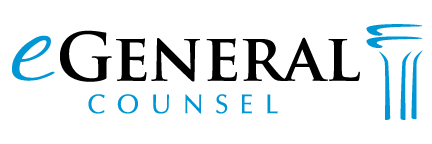A reverse merger refers to a transaction where a privately held company mergers with a publicly held company. The latter has a sole purpose of acquiring a private company and has no assets (besides cash) and also has no or nominal existing business operations. As such, it is referred to as a shell company. During a reverse merger, financing is arranged for completion before or after the transaction takes place. The management of the private company takes control of the daily operations once the transaction is completed.
If there are any expected changes in the board of directors of the public company (a common occurrence), additional filings are done through the SEC. Reverse mergers are quite common since they are some of the best alternatives to IPOs. Other alternatives include merging with SPAC (Special Purpose Acquisition Company) or self-filing. Here is what you need to know about the advantages and disadvantages of a public company as well as the pros and cons of reverse mergers.
 Most private companies choose to go public for many reasons. They could wish to create liquidity for the early investors and shareholders. Additionally, they might boost the balance sheet through an equity infusion or leverage it altogether to provide a proper mix of debt and equity. Another reason could be to use the publicly traded stock and cash to process strategic acquisitions, pursue an organic expansion plan or fill in the gaps in the personnel or product portfolio.
Most private companies choose to go public for many reasons. They could wish to create liquidity for the early investors and shareholders. Additionally, they might boost the balance sheet through an equity infusion or leverage it altogether to provide a proper mix of debt and equity. Another reason could be to use the publicly traded stock and cash to process strategic acquisitions, pursue an organic expansion plan or fill in the gaps in the personnel or product portfolio.
Since there are both advantages and disadvantage of being a public company, it’s prudent for every company to weigh the pros and cons before making such a decision. First, they consider their particular circumstances and determine other financial alternatives before choosing to become a public company. The advantages of a public company include the following:
- It allows easier access of capital
- It allows greater liquidity
- Allows the company to grow faster through acquisitions since the stock becomes the currency
- The company has the ability to use the stock to attract and retain talent.
Some of the disadvantages of a public company include the following:
- There’s always pressure to produce short-term results. It always comes at the peril of the company’s long-term interests.
- Public disclosure of the company information is adamant. It can become a competitive disadvantage, especially in bad economic times.
- There are some extra costs involved such as adding new personnel and any professional fees through SEC filings and other compliances.
- Any movement of the stock in the wrong direction or bad news might result in lawsuits.

Over the last few years, reverse mergers have become quite popular, especially with the stricter regulation of the IPO market in 2000. It’s a good platform for companies that are not ready for an IPO to raise smaller amounts of capital (around $3 to 20 million). Under the securities act of 1933, the SEC passed new provisions under rule 419 which bolstered reverse mergers. Here, there are requirements for shell companies that should protect investors and shareholders from fraud. The new provision attracts PIPE investors and entrepreneurs, boosting reverse mergers altogether.
Some of the benefits of reverse mergers compared to IPOs include the following:
- They are very cheap and affordable
- The process is faster
- There is no dependency on the IPO market window to complete the transaction successfully
- The initial stock price is not subject to any changes so as to accommodate market conditions
- There is less requirement of up front distraction and executive time
- There is also less dilution
- There is no need for underwriters
When compared to IPOs, reverse mergers have the following disadvantages:
- A company is most likely going to raise more money through an IPO rather than a reverse merger
- Rather than trading through a major market, a company that becomes public through a reverse merger will trade on the OTC bulletin board
- The IPO process allows proper market support for any stock.
Note that, with the last two disadvantages of reverse mergers, a lot of time and effort should be dedicated to mitigating these issues, failure to which neutralizes the advantages of being a public entity. Of course, it’s important to choose the right shell company. The cost of a clean shell company might go as high as $1 million since reverse mergers have become quite popular. Determining the current players/promoters involved in the shell, identifying the existing shareholder base and understanding the history of the shell company are some of the crucial factors in determining whether or not a reverse merger will become successful.
On that note, before deciding whether a reverse merger or an IPO is the right move from your business, you need to weigh the pros and cons of each decision. Note that, you need to find the right financial minds to help you make the best decision moving forward. You should look at finance experts, accountants and also an expert legal team that understands the world of reverse mergers and IPOs to make an informed decision. With the right shell company, you should be able to make a successful reverse merger that boosts your company’s growth, allowing you to achieve the advantages mentioned above. Therefore, it’s ideal to invest a lot of time into that decision for the best results.
